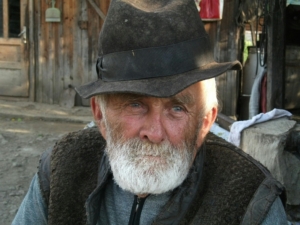Addressing the Homeless Crisis in Slovakia
 The picturesque landscapes and rich cultural heritage of Slovakia often belie the social issues simmering beneath its scenic veneer. The country is grappling with a homelessness problem that demands a compassionate, multifaceted response. This article addresses the homeless crisis in Slovakia in this in-depth exploration of the underpinnings of this societal challenge. Additionally, it provides information about the ongoing efforts to address homelessness.
The picturesque landscapes and rich cultural heritage of Slovakia often belie the social issues simmering beneath its scenic veneer. The country is grappling with a homelessness problem that demands a compassionate, multifaceted response. This article addresses the homeless crisis in Slovakia in this in-depth exploration of the underpinnings of this societal challenge. Additionally, it provides information about the ongoing efforts to address homelessness.
Understanding the Homeless Crisis in Slovakia
While it is easy to dismiss homelessness as a problem limited to urban centers, the issue is pervasive across various regions of Slovakia. The causes have layers, from economic downturns and job loss to mental health issues and lack of affordable housing. The data is disheartening, with numbers showing an upward trajectory in homelessness, particularly in urban areas. For example, the 2022 population census for Slovakia recorded 71,076 people without homes versus the 23,483 homeless population recorded in the 2011 census.
Exposing the Challenges
Life on the streets is an unimaginable struggle. The lack of a stable home is just the tip of the iceberg for those experiencing homelessness in Slovakia. Affordable housing is scarce, and the domino effect includes limited health care provisions and the perpetual struggle to access social services. For example, according to World Habitat, the limited access to affordable housing in Slovakia is largely due to the fact that there is a shortage of rental properties. Since buying homes is more common than renting in this nation, those who cannot afford to purchase a property are left with limited affordable renting options.
Not to mention, the stigma attached to being homeless exacerbates the challenges of reintegrating into society. Life is incredibly challenging for those living without a stable home, and the men, women and children have access to limited resources.
Government and Community Initiatives
Fortunately, the response to this crisis has been a mix of official and grassroots efforts. The Slovakian government has implemented certain policies aiming to provide shelter and support services to people without housing. Alongside these, non-governmental organizations (NGOs) and community-led initiatives have sprung up to provide practical aid and reconnect people experiencing homelessness with society.
NGOs have led several campaigns to help bring awareness and improve the response to homelessness in Slovakia. For example, NGO volunteers have partnered with STOPA Slovensko to record the population consensus for Slovakia more accurately. A local campaign known as “We Are Not Invisible” also helped bring more awareness to the growing number of homeless individuals needing assistance housing.
Final Thoughts
Homelessness is not an intractable issue. Building a safety net for those who have fallen on hard times is possible with sustained effort. Addressing the homeless crisis in Slovakia has shown promising signs of a society willing to grapple with this crisis. The act of helping is not just about charity but also about justice and societal progress.
Brainstorming quality ideas can help this country, and others experiencing mass homelessness can help solve this issue more quickly. For example, they can build yurt communities for those without housing to live in. Yurts have a long lifespan and are relatively inexpensive shelters. Together, it is possible to create a home for all in Slovakia.
– Kelly Schoessling
Photo: Pexels
